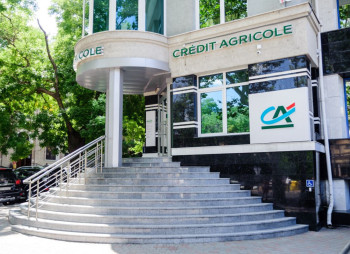The investment climate in Ukraine today is similar to a March day: the air is still cold, but the sun is already peeking out from behind the clouds.
It is heartening news that after the shock of the initial stage of a full-scale invasion, foreign investors have recovered a bit and started investing again in the national economy. However - and this cools the first news - the amounts of these investments are still significantly lower than the pre-war level. And in some places it is a consequence of restrictions that do not allow the withdrawal of capital from Ukraine.
Renaissance
Foreign direct investment (FDI) — long-term investments by non-resident companies — has always resembled a timid bird in its behavior. After all, their size was influenced by both economic stability and political factors, including the level of corruption and the general state of the business environment. This was the case even in peacetime, explains Olga Pogarska, head of the National Bank's economic analysis department. Therefore, significant reductions in FDI in Ukraine occurred after the financial crisis of 2008, after the triple crisis of 2014-2015, and during the pandemic of 2020.
Therefore, Poharska was not surprised that the full-scale invasion of Russia led to an avalanche-like decrease in FDI inflows - immediately 36 times: from $8 billion in 2021 to $221 million in 2022.
However, the expert notes with pleasure that a kind of renaissance took place last year: FDI increased to the level of $4.8 billion. However, most of this money is reinvested income of those businesses already operating in the country.
The main obstacle to foreign direct investment, according to Vitaly Vavryshchuk, the head of the macroeconomic research department of the ICU group, is the war and the security risks created by it. And this factor will stop investors until peace comes.
But the restrictions on the movement of capital, which are currently operating in the state (because of them it is temporarily impossible to return invested funds and profits abroad) are not a problem for large companies. After all, according to Vavryshchuk, they make investments for decades, therefore, temporary restrictions will not hinder this category of investors.
Careful wallets
But private, individual investors were more afraid of the great war.
Dmytro Taranenko, a junior economist at the investment company Dragon Capital, noted that in 2022, the level of private foreign investment (PRII) fell from $2.5 billion to zero. Fortunately, in 2023, the state of affairs improved and this indicator regained part of the lost, reaching the mark of $1 billion.
According to preliminary data from the National Bank of Ukraine, the recovery of PrII continued in the first half of 2024 — in six months, private foreign investors invested $0.9 billion in the country, which is three times more than the figure for the first half of 2023.
Taranenko clarified that all these data are indicated without reinvestment, because the last indicator is purely technical: it reflects, among other things, the impossibility of withdrawing earned money from the country, in particular due to current currency restrictions.
Vavryshchuk, in turn, emphasizes that all private foreign investments reflected in Ukraine's balance of payments statistics since the beginning of the Great War are profits from previous investments.
According to the NBU, in 2021 the largest investors in the national economy were the Netherlands ($2.2 billion) and Cyprus ($0.5 billion), i.e. a country with a low level of taxation and an offshore state. By the way, Cypriot money in the expert environment is traditionally considered to be associated with domestic businessmen.
Taranenko adds that these two countries will remain the main sources of PrII in 2023 as well.
Private investors are still most attracted to two areas — industry and retail trade.
However, the share of the former decreased from 65% in 2021 to 37% in 2023 due to the destruction and occupation of part of the Ukrainian territory. At the same time, the corresponding indicator of retail trade doubled to 28%, although in absolute terms it remained almost unchanged at the level of $0.3 billion.
Slowly, but for the better
The example of Israel shows: it is possible not to be in NATO, to have a long period of wars of varying intensity, but its own high-tech army and an alliance with a nuclear state reduce security risks and allow competition for investments. However, Israel, unlike Ukraine, says Oleksandr Parashchyi, the head of Concorde Capital's analytical department, can count on direct military support from Western allies.
So far, the NBU predicts a gradual recovery of the level of foreign direct investment.
According to Pogarska's estimates, their volume this year may amount to $5 billion, next year — $5.6 billion, and in 2026 — even $7.9 billion.
She believes that growth will be stimulated by the normalization of the functioning of the economy, improvement of the investment climate and the reconstruction of the country. Further European integration reforms will play a special role.
Vavryshchuk remains less optimistic about private and foreign direct investment. He said, even under conditions of stabilization of the situation, their level will not increase significantly due to the war.
According to the analyst's forecasts, in 2024-2025, Ukraine will attract only symbolic amounts of new direct investments — several hundred million dollars every year.
Who will be right — Pogarska or Vavryshchuk? There is no answer to this question yet.






